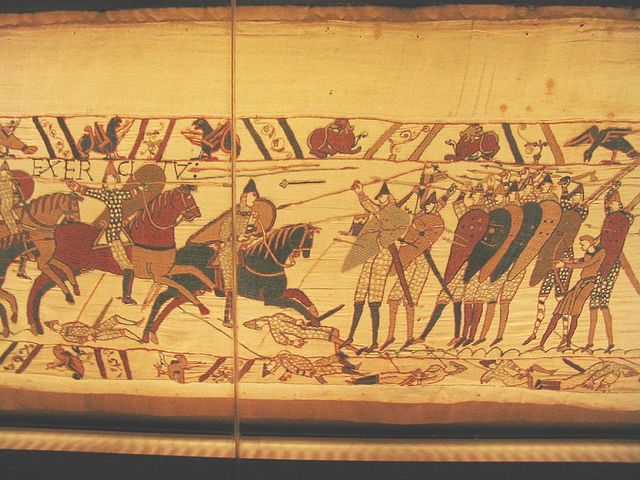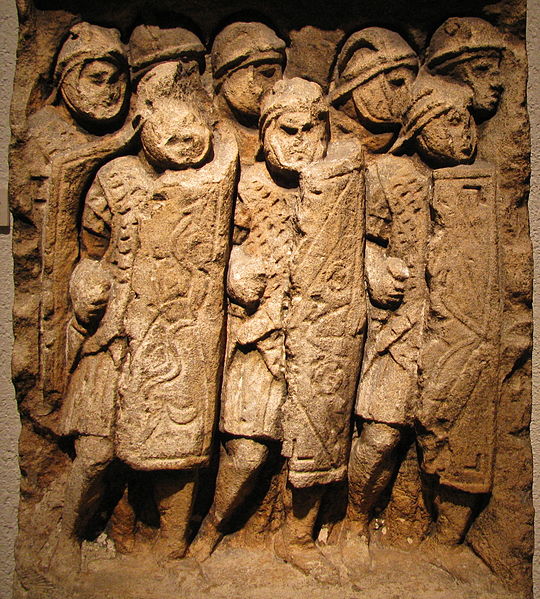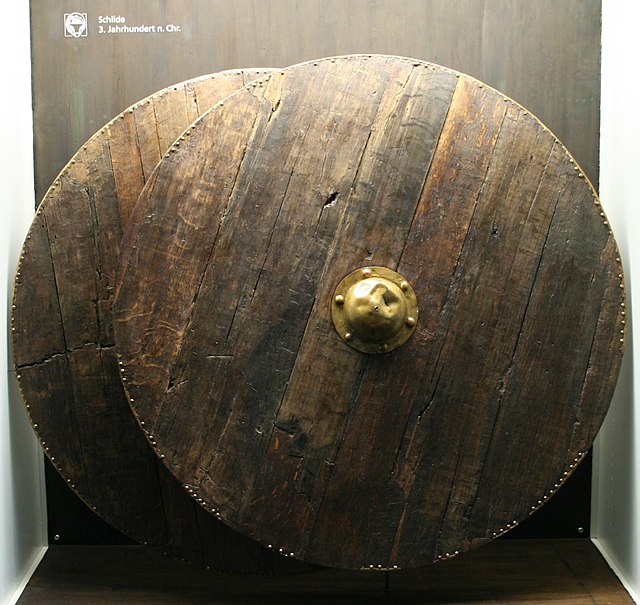A shield wall is a military formation that was common in ancient and medieval warfare. There were many slight variations of this formation,
but the common factor was soldiers standing shoulder to shoulder and holding their shields so that they would abut or overlap. Each soldier thus benefited from the protection of the shields of his neighbors and his own.
Anglo-Saxon shield wall against Norman cavalry at the Battle of Hastings (scene from the Bayeux Tapestry).
Ancient depiction of Sumerian infantry shield wall, from the Stele of the Vultures honoring the victory of king Eannatum of Lagash over Umma, c. 2500 BC
Roman legionaries in formation, Stele found at Glanum, on display at the Gallo-Roman Museum of Lyon-Fourvière
Police form a testudo shield wall
A shield is a piece of personal armour held in the hand, which may or may not be strapped to the wrist or forearm. Shields are used to intercept specific attacks, whether from close-ranged weaponry or projectiles such as arrows, by means of active blocks, as well as to provide passive protection by closing one or more lines of engagement during combat.
Zulu chief Goza and two of his councillors in war-dress, all with Nguni shields, c.1870. The size of the shield on the chief's left arm denotes his status, and the white colour that he is a married man.
Wall painting depicting a Mycenaean Greek "figure eight", 15th century BC, National Archaeological Museum, Athens
Elaborate and sophisticated shields from the Philippines.
Two wooden round shields survived at Thorsberg moor (3rd century AD)








